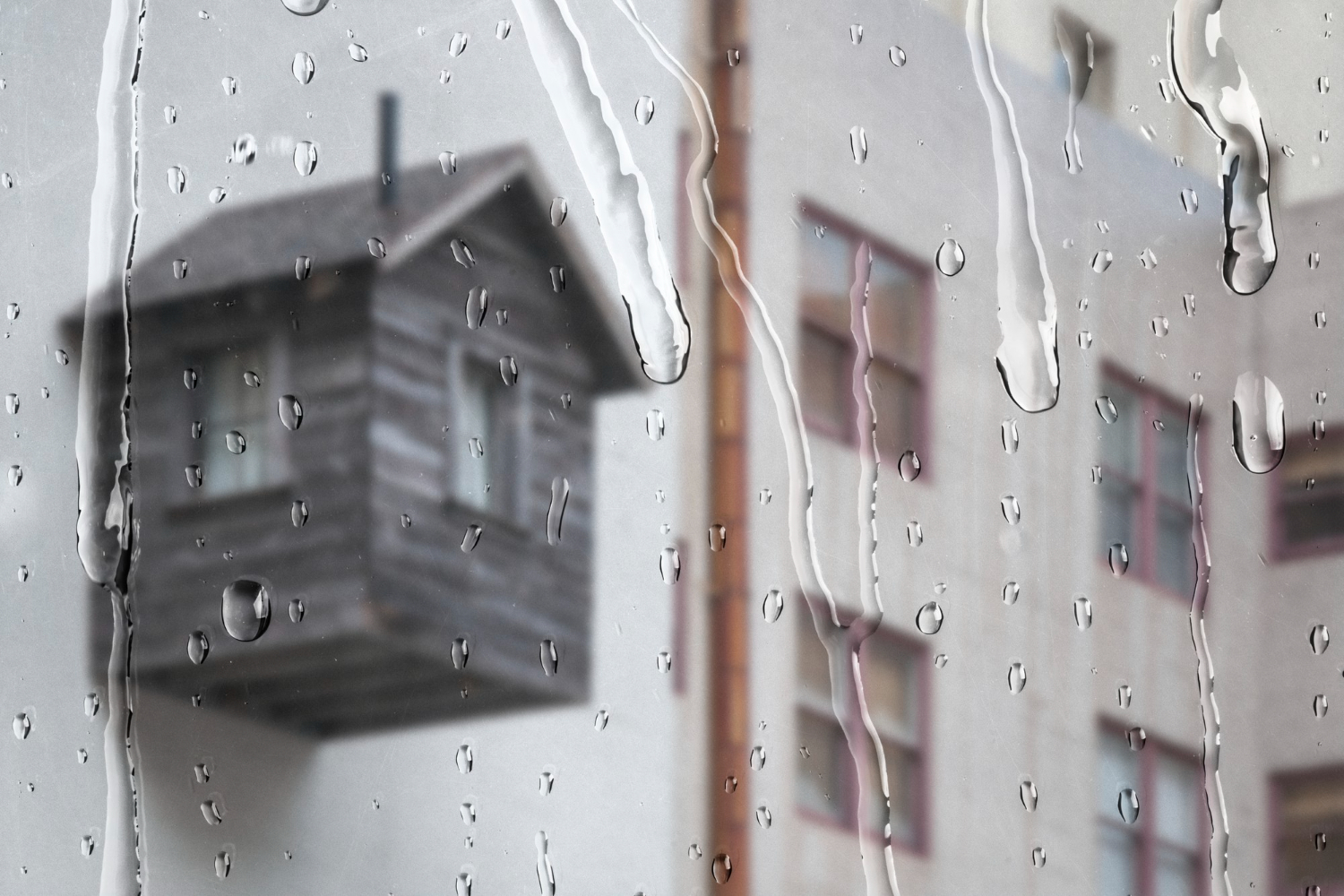High humidity can be challenging to deal with, but with the right strategies and preparations, you can stay comfortable and make the most of your time in humid environments. In this comprehensive guide, we will explore various tips, techniques, and lifestyle adjustments that can help you thrive in high humidity. From choosing the right clothing to managing indoor humidity levels, we’ve got you covered.
Understanding High Humidity
Before we delve into the strategies for surviving high humidity, let’s first take a closer look at what high humidity entails. High humidity refers to an environment where the air contains a significant amount of moisture or water vapor. It is often associated with hot and tropical climates, where the humidity levels can be quite challenging to deal with.
When the humidity is high, it means that the air is saturated with moisture, making it difficult for sweat to evaporate from our bodies. As a result, we may experience that sticky and clammy feeling on our skin, which can be quite uncomfortable. Additionally, high humidity can have various effects on our bodies and overall well-being.
- One of the primary challenges of high humidity is the impact it has on our breathing. The moisture-laden air can make it more difficult for our respiratory system to function optimally. It can lead to a sense of heaviness in the chest, shortness of breath, and a feeling of overall discomfort. Individuals with respiratory conditions such as asthma or allergies may find their symptoms exacerbated in high humidity;
- Moreover, high humidity can also affect our body’s ability to regulate its temperature. When sweat evaporates, it helps cool down our bodies. However, in high humidity, sweat evaporates at a slower rate or doesn’t evaporate effectively at all. This can make us feel hotter and increase the risk of heat-related illnesses, such as heat exhaustion or heat stroke;
- Beyond the physical discomfort, high humidity can also impact our daily activities and overall productivity. It can make it harder to concentrate, as the sticky and oppressive environment can leave us feeling lethargic and drained. It can also affect the quality of our sleep, leading to restless nights and feeling less rested.
By understanding the effects of high humidity, we can better prepare ourselves to handle it. With the right strategies and precautions, we can minimize the discomfort and potential health risks associated with high humidity, allowing us to continue our daily routines with greater ease and well-being.
Effects of High Humidity on the Body
In this section, we will explore the specific effects that high humidity can have on the body, highlighting the importance of understanding and addressing these challenges for our overall well-being.
- Increased Perspiration: In high humidity, the body’s natural cooling mechanism, sweating, becomes less effective. As a result, you may experience excessive sweating, even in non-strenuous activities. This can lead to discomfort, damp clothing, and a persistent feeling of stickiness. It’s important to stay hydrated and wear breathable fabrics to mitigate the effects of increased perspiration in high humidity;
- Difficulty in Breathing: Humid air feels heavier and denser, making it harder for your lungs to expand fully. This can result in a sense of breathlessness and increased respiratory effort, especially for individuals with pre-existing respiratory conditions such as asthma or allergies. Taking slow, deep breaths and finding ways to reduce exposure to humid environments can help alleviate breathing difficulties in high humidity;
- Heat-Related Illnesses: High humidity combined with elevated temperatures can create a perfect storm for heat-related illnesses. When the air is already saturated with moisture, sweat doesn’t evaporate effectively, hindering the body’s ability to cool down. This can increase the risk of heat exhaustion or even life-threatening heatstroke. It is crucial to stay hydrated, seek shade or air-conditioned spaces, and take regular breaks in cool environments to prevent heat-related illnesses in high humidity;
- Skin Problems: Prolonged exposure to high humidity can contribute to various skin issues. The excess moisture in the air can lead to clogged pores, increased oil production, and a higher likelihood of acne breakouts. Moreover, the constant dampness on the skin can create an ideal environment for fungal infections and irritate existing skin conditions. Practicing good skincare hygiene, using non-comedogenic products, and keeping the skin clean and dry can help mitigate these skin problems in high humidity.
High humidity poses several challenges for our bodies, from increased perspiration and breathing difficulties to the risk of heat-related illnesses and skin problems. Understanding these effects and taking proactive measures to address them is crucial for maintaining our well-being in humid conditions.
Fashion Tips for High Humidity

Dressing appropriately in high humidity can significantly impact your comfort levels. Here are some fashion tips to help you navigate the challenges of dressing for high humidity:
- Choose lightweight and breathable fabrics: Opt for natural fabrics like cotton, linen, or bamboo, as they allow for better air circulation and moisture evaporation. Avoid synthetic materials that trap heat and moisture;
- Loose and flowy clothing: Opt for loose-fitting and flowy outfits that allow air to circulate freely around your body. Tight-fitting clothes can increase discomfort and restrict airflow;
- Light colors: Dark-colored clothing absorbs more heat from the sun, making you feel warmer in high humidity. Opt for lighter colors like white, pastels, or neutrals to reflect sunlight and stay cooler;
- Avoid heavy layers: Layering can be useful in temperature fluctuations, but in high humidity, it can trap heat and moisture close to your body. Keep your clothing lightweight and avoid unnecessary layers;
- Opt for moisture-wicking materials: Some athletic clothing is designed with moisture-wicking properties, which can help draw sweat away from your skin and keep you feeling drier and more comfortable;
- Choose open-toe shoes: Open-toe shoes or sandals allow better airflow and reduce the chances of developing foot-related issues in humid conditions. Ensure your footwear is breathable and comfortable for long periods.
Managing Indoor Humidity
In addition to adapting your clothing choices, managing indoor humidity levels can contribute significantly to your overall comfort. Excessive humidity indoors can make the environment feel even more stifling and uncomfortable.
By implementing some simple strategies, you can create a more pleasant and balanced indoor atmosphere. Here are some tips for controlling indoor humidity:
- Use a dehumidifier: A dehumidifier is a valuable tool for removing excess moisture from the air. These devices work by drawing in humid air, cooling it to condense the moisture, and then releasing drier air back into the room. Place the dehumidifier in areas with high humidity, such as basements, bathrooms, or laundry rooms. Regularly empty the water collection container to maintain its effectiveness;
- Ensure proper ventilation: Good ventilation is essential for reducing indoor humidity levels. Open windows and doors whenever possible to let fresh air circulate throughout your home. Use exhaust fans in kitchens and bathrooms to remove humid air generated by cooking or showering. Consider using fans or air conditioning units to promote airflow and enhance the evaporation of moisture;
- Fix leaks and seal cracks: Inspect your home for any leaks, water damage, or cracks that may contribute to increased humidity levels. Leaking pipes, faucets, or roofs can introduce excess moisture into your living spaces. Seal any cracks or gaps in walls, windows, or doors to prevent humid outdoor air from infiltrating your home. By addressing these issues promptly, you can prevent moisture buildup and reduce overall humidity;
- Use moisture-absorbing products: To target specific areas prone to high humidity, consider using moisture-absorbing products. Silica gel packs or charcoal bags can be placed in closets, storage spaces, or other enclosed areas to help absorb excess moisture. These products work by attracting and trapping moisture in their porous materials, effectively reducing humidity and preventing mold or mildew growth. Remember to replace or regenerate these products according to the manufacturer’s instructions.
By implementing these strategies, you can effectively manage indoor humidity levels and create a more comfortable living environment. Remember to monitor humidity levels regularly using a hygrometer to ensure they stay within a comfortable range (typically between 40-60% relative humidity). Finding the right balance of humidity in your home can contribute to improved air quality, reduced risk of mold growth, and enhanced overall comfort.
Lifestyle Adjustments for High Humidity
Beyond clothing choices and managing indoor humidity, there are certain lifestyle adjustments you can make to better cope with high humidity. These tips will help you stay comfortable and maintain your well-being in humid conditions. Here are some recommendations:
- Stay hydrated: Drink plenty of water to stay hydrated in high humidity. Water helps regulate your body temperature and compensates for increased fluid loss through sweating;
- Seek shade and cool environments: When outdoors, try to stay in shaded areas or seek cool environments like air-conditioned spaces. This can provide temporary relief from the heat and humidity;
- Take cool showers: Cool showers can help lower your body temperature and provide immediate relief from the discomfort of high humidity. Consider taking multiple showers throughout the day if necessary;
- Use fans or air conditioning: Fans and air conditioning can improve air circulation and create a more comfortable environment. Position fans strategically to facilitate airflow and consider using portable fans for additional cooling;
- Avoid strenuous activities during peak heat: High humidity intensifies the effects of heat, making strenuous activities more challenging. If possible, schedule outdoor activities during cooler parts of the day or choose indoor alternatives.
Conclusion
High humidity doesn’t have to be a barrier to your comfort and enjoyment. By implementing the tips and techniques outlined in this guide, you can navigate and thrive in humid conditions.
From choosing the right clothing to managing indoor humidity levels and making lifestyle adjustments, you have the tools to stay comfortable and make the most of your time in high humidity. Stay cool, hydrated, and adapt to the environment, and remember that preparation is key to a comfortable experience.
FAQ
High humidity can impact your health by causing excessive perspiration, difficulty in breathing, increased risk of heat-related illnesses, and potential skin problems. It’s important to take necessary precautions and adapt to the environment.
Exercising outdoors in high humidity can be more challenging due to the increased heat and potential difficulty in breathing. If you choose to exercise outdoors, take frequent breaks, stay hydrated, and listen to your body’s signals.
To minimize the impact of high humidity on your skin, cleanse your skin regularly, use oil-free moisturizers, and consider incorporating anti-humidity skincare products. Additionally, wearing lightweight and breathable fabrics can help reduce skin-related issues.
High humidity, particularly when combined with high temperatures, can increase the risk of heat-related illnesses such as heat exhaustion and heatstroke. It’s crucial to stay hydrated, seek shade, and take necessary precautions to avoid such risks.
Yes, high humidity can have an impact on sleep quality. When the air is humid, it can feel heavier and make the environment feel uncomfortable and stuffy. This can lead to difficulty falling asleep or staying asleep throughout the night. High humidity can also contribute to increased sweating during sleep, which can disrupt your sleep cycle and make you feel restless. To improve sleep quality in high humidity, consider using a fan or air conditioning to promote air circulation and create a cooler and more comfortable sleeping environment.


